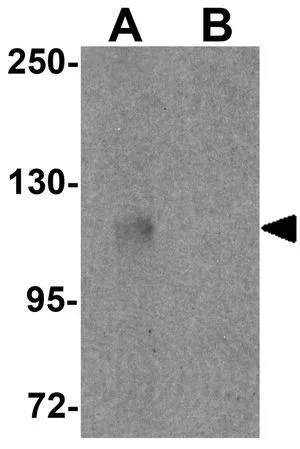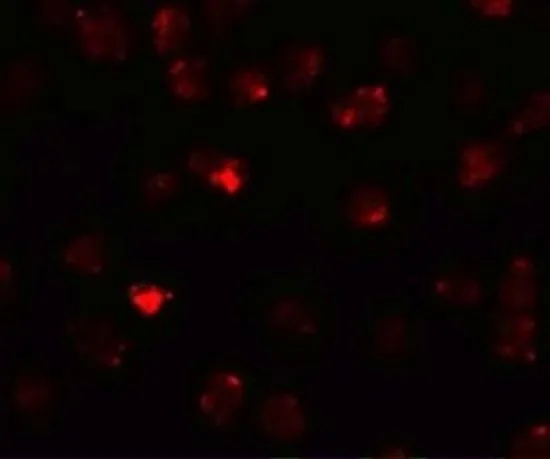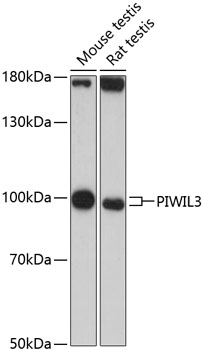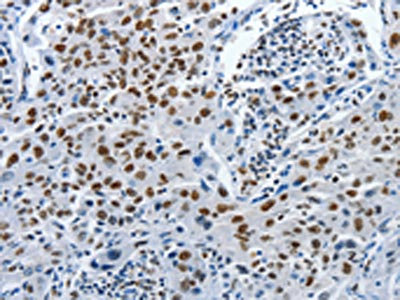
WB analysis of 3T3 cell lysate in (A) the absence and (B) the presence of blocking peptide using GTX85145 PIWIL3 antibody. Working concentration : 1 microg/ml
PIWIL3 antibody
GTX85145
ApplicationsImmunoFluorescence, Western Blot, ELISA, ImmunoCytoChemistry
Product group Antibodies
TargetPIWIL3
Overview
- SupplierGeneTex
- Product NamePIWIL3 antibody
- Delivery Days Customer9
- Application Supplier NoteWB: 1 microg/mL. ICC/IF: 20 microg/mL. *Optimal dilutions/concentrations should be determined by the researcher.Not tested in other applications.
- ApplicationsImmunoFluorescence, Western Blot, ELISA, ImmunoCytoChemistry
- CertificationResearch Use Only
- ClonalityPolyclonal
- Concentration1 mg/ml
- ConjugateUnconjugated
- Gene ID440822
- Target namePIWIL3
- Target descriptionpiwi like RNA-mediated gene silencing 3
- Target synonymsHIWI3, piwi-like protein 3, piwi-like 3
- HostRabbit
- IsotypeIgG
- Protein IDQ7Z3Z3
- Protein NamePiwi-like protein 3
- Scientific DescriptionPIWI-L3 is a member of the PIWI subfamily of Argonaute proteins, evolutionarily conserved proteins containing both PAZ and Piwi motifs that are crucial for the biogenesis and function of small non-coding RNAs and play important roles in stem cell self-renewal, RNA silencing, and translational regulation in diverse organisms. Recent studies have shown that overexpression of PIWI-L3 (as well as other PIWI-like proteins) are potential biomarkers for astrocytic glioma, meningioma, and other cancers.
- Storage Instruction-20°C or -80°C,2°C to 8°C
- UNSPSC12352203




